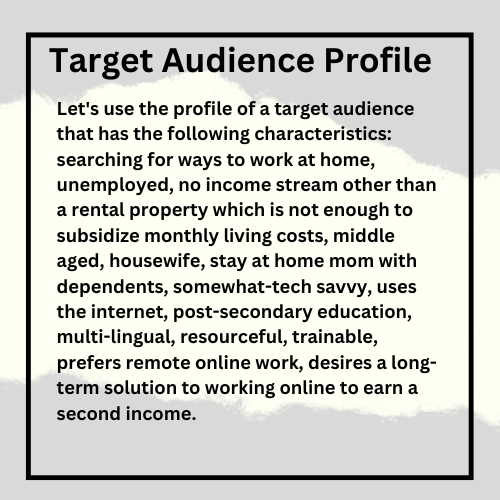To succeed in marketing PTC offers and in affiliate marketing, you must master the process of finding the right 'key' words and phrases to optimize content writing and site structure for search engines to efficiently find, label, classify, and store data.
The digital age has simplified the process of keyword research, extracting keywords from written content or copy, generating search engine optimized titles, article outlines include sub-topic titles, meta tags (titles and descriptions for the SEO platform in the back office to create optimized snippets in the search engine result pages, and many more useful AI tools to create and edit content.
Although the world of artificial intelligence has simplified the process of keyword research by literally performing it automatically and autonomously, you must still decide on a given 'shortlist' of key words and phrases to optimize content writing but also serve to optimize the site niche. Of course the focus of discussion in a blog post requires additional keywords specific to the main topic, but these keywords elaborate on the main keywords compiled in the shortlist.
In other words, don't haphazardly start writing about a niche (PTC) without this optimized list of key words and key phrases that you have chosen based on researching the metrics (medium volume and low competition for new websites). The keywords and keyword phrases in the shortlist are to be included or integrated into the content writing in addition to new keywords for sub-topics discussed in a dedicated blog post.
The Keyword Research Process
As one aspect of on-page search engine optimization, keywords require in-depth research and evaluation in order to find the 'right' keywords and keyword phrases to drive traffic to your site. The keyword research process is in many ways similar to the writing process. You begin by brainstorming for ideas about how people word their online search requests for a particular product, service, or niche. You first need to clarify your niche and product, and then start brainstorming. This is where online keyword research tools similar to Google Trends and Answer The Public can help you find the different ways people ask search engines to search information.
You are brainstorming for different words and expressions. Create a shortlist (and use the help offered by AI tools) of 'key' words and phrases. Then use keyword research tools that measure metrics (volume, competition, density and relevance) to refine the shortlist. Before defining the metrics listed above, it is important to clearly understand, 'why it is so important to do a keyword research.'
The Recipe for Success is finding the Right Keywords to Promote
Think of keywords as the 'secret sauce' used to prepare a commonplace recipe served by every restaurateur on the city block. It's that secret ingredient and culinary preparation that beats the competition and sends streams of customers waiting in line to be serviced, and it creates repeat customers. This is technically what the shortlist of keywords and keyword phrases should do for your website. They are selective, integrated on all web pages, in all content writing, and strategically located within on-page SEO elements that are required to be optimized for search engine recognition, such as the H1 heading of a blog post, and the meta title in the SEO platform.
The reason why marketers fail to get referrals using a PTC downline builder is because they haven't done this vital keyword research in order to find the best 'key' words and descriptive phrases, nor have they strategically placed them to fulfill the search engine mandatory requirements (protocols) for optimization.
Search Engines Use Keyword to Determine Relevancy
Search engines have several protocols in place to determine relevancy such as the use of internal and external linking for example. The function of keywords is to clarify relevancy for search engine bots. This why keywords and phrases are strategically place in the layout of the blog page and include in the SEO platform in the box office. And in particularly, it is this shortlist of keywords and keyword phrases that should be inserted into the GLOBAL Meta Data SEO platform of the site.
When you have optimized a PTC blog post to include the shortlist of keywords and keyword phrases, and keywords relevant to the focus of discussion, search engines locate and fetch this information for users online searching this PTC niche or a particular PTC product or PTC service.
Keyword optimizing content, layout and site structure is done to assist search engines in their daily task of locating relevant information in response to user queries. And in return for following these search engine guideline, your site achieves a higher ranking in the search engine result pages. Think like a search engine to simplify the SEO processing of your site so that search engine bots can find and digest the information: label, prioritize, categorize, code, condense and tag.
The completion of Meta Tags (title, description, keyword listing), alt tags for images, schema in the HTML header, and so forth; these are examples of labeling and coding. The hierarchy and strategic use of title tags is an example of prioritizing. And the use of blog categories and tags are examples of sorting. There are free online tools to help you create optimized headings, meta tags, schema and so forth. Don't be intimidated by the dynamics of the SEO process. It's simply a matter of learn what needs to optimized and how to do it. It's technical and online AI tools have immensely simplified and sped up the process.
Doing the keyword research is the most difficult part of the search engine optimization process, because it requires you to clarify and to understand niche you are promoting, the audience you are targeting, and the bestselling features of the product or service you are promoting with the niche. All three of these aspects require you to brainstorm for ideas, research and refine your selection so that you can then proceed to plan a marketing strategy and create high converting sales assets (banners, splash pages, video shorts, lead magnets, and so forth) which are also keyword optimized.
To refine the list of brainstormed ideas for keywords and keyword phrase you need to examine and evaluate the four keyword metrics. When you have tested the 'key' words and phrases for relevancy, volume, density and competition, post this list next to your desktop for easy access when writing content.
A Closer Examination of the Different Types of Keywords and Keyword Metrics
There are several types of keywords which include seed keywords, short-tail and long-tail keywords, latent semantic indexing (LSI) keywords, commercial keywords, and informational keywords. These terms need to be defined and demonstrated to clarify how to select keyword and keyword phrases.
There are four keyword metrics used to evaluate and determine which keyword and keyword phrases to opt for. These metrics include volume, competition, relevancy, and density. The metric terms are rather straight-forward to understand in that they measure what is named. What your need to learn about and evaluate is what to aim for in using these metrics to evaluate and select the ideal keywords and the ideal keyword phrases. For the sake of expediency, the best metrics for new websites to aim for is the following: medium to high volume and low competition (which is also referred to as keyword difficulty).
Seed keywords are the foundation of keyword research.
They are broad terms that represent the main topic or theme of a website or content. By starting with seed keywords, you can generate more specific and relevant keyword ideas for your SEO strategy. Utilize keyword research tools to expand upon keywords and discover related terms that your target audience is searching for. Incorporate these long-tail keywords into your content to attract organic traffic and improve your website's visibility in search engine results." (Ryan Robinson's blog tool, Paragraph AI Generator)

'Silk' is the seed keyword for luxury lingerie to be used in the phrase, 'silk lingerie sets.' This keyword is significant for targeting an audience seeking high-end lingerie made from luxurious materials. The word 'silk' suggests premium quality and elegance, appealing to customers with a preference for sophisticated and luxurious lingerie pieces. By strategically using this seed keyword 'silk' in content writing and marketing campaigns, I can target or get the attention of a specific target audience interested in indulgent and exclusive designer lingerie labels.
Short and Long-tailed Keywords Drive Relevant Organic Traffic
"Short-tail keywords are brief and general terms with high search volume, while Long-tail keywords are more specific and targeted phrases with lower search volume. In keyword research, it is essential to use a mix of both short-tail and long-tail keywords to optimize content for search engines."
"Short-tail keywords can attract a larger audience and generate more traffic, while long-tail keywords can result in higher conversion rates and better user engagement."
"By incorporating a combination of short and long-tailed keywords in a strategic manner, websites can improve their search engine rankings and drive relevant organic traffic to their sites." (Again, the definition is courtesy of Paragraph AI Generator collection of free blogging tools on Ryan Robinson's blog site.)

Using the example of "silk" as the seed keyword; and "silk lingerie set" as the long-tailed keyword (or keyword phrase). Using a second example of "luxury lingerie" as a short-tailed keyword phrase; and using the example of "silk luxury lingerie sets for petite women" as a long-tailed keyword phrase.
The short-tailed keyword "luxury lingerie" appeals to a broad audience seeking high-fashion, expensive intimate apparel, while the long-tail keyword phrase of "silk luxury lingerie sets for petite women" targets a specific audience looking for exquisite lingerie that is designed for smaller body types.
By incorporating the terms "silk" and "petite women", this long-tail keyword phrase targets women seeking luxurious and well-fitted lingerie options; thereby, it enhances the relevance of the search results to this particular (petite) body size.
LSI (latent semantic indexing) Keywords
"LSI keywords are terms related to the main keyword being researched." In other words, a latent semantic keyword is modifier (another way to describe or name the main keyword). For example, if lingerie is the main keyword; the modifier is 'intimates' or 'intimate apparel' or 'silk intimates'.
"To use LSI keywords effectively in keyword research, start by identifying the main keyword related to your content. Then utilize tools such as Google's Keyword Planner or LSI Graph to generate a list of LSI keywords naturally throughout your content to improve its relevance and visibility to search engines. By using LSI keywords strategically, you can enhance the overall SEO performance of your content." ( AI generated definition using Paragraph AI Generator from Ryan Robinson's Suite of Forever Free Blogging Tools.)

As mentioned above, a potential LSI keyword for luxury lingerie is "silk intimates". This term is relevant to a target audience seeking expensive, high fashion, designer, luxurious lingerie made from premium materials such as Calais lace, silk, satin, tulle and so on. By incorporating the word "silk", the keyword indicates the material used in the lingerie, and this keyword thereby, appeals to customers looking for sophisticated and indulgent designer fine lingerie undergarments rather than luxury lingerie underwear brands. The use of the LSI keyword (silk intimates) can help attract an audience interested in luxurious lingerie that offers both comfort and elegance, thereby aligning their preference for both quality and opulence.
Commercial Keyword indicate a user's intent to make a purchase.
"When conducting a keyword research it is necessary to prioritize commercial keywords to attract potential customers ready to buy."
"Utilize keyword research tools to identify high-converting commercial keywords relevant to your product or service. Analyze search volume, competition, and buyer intent to select the most effective commercial keywords for your SEO strategy. Incorporate these keywords strategically in your website content, Meta tags, and ad campaigns to drive targeted traffic and increase sales conversions." (AI generated content using Paragraph AI Generator tool, Ryan Robinson's 25+ Forever Free Blogging Tools.)

An example of a commercial keyword for luxury lingerie is "silk lace bra sets". It targets affluent consumers searching for high fashion intimate apparel. The term "silk" stresses luxury and quality, while the term "lace" emphasizes elegance and sophistication. The phrase "bra sets" suggests that the product includes matching pieces, thus appealing to customers interested in finding coordinating sets (such as a 5 piece matching set of bra, panty, and basque with matching negligee, and long robe) made from luxurious fabrics and materials 9 such as silk, satin, lace, and tulle with embroidered brocade.)
Informational Keywords are terms used to request specific information.
"These keywords typically start with words like "what is", "how to", or "best ways to". Incorporating informational keywords in keyword research helps identify popular topics of interest. By targeting these keywords, content creators can attract users seeking detailed information on a particular subject. Including informational keywords in content can improve search engine rankings and drive organic traffic to websites."

Examples of informational keywords for luxury lingerie include "how to choose the best luxury lingerie", "silk verses lace luxury lingerie," "lingerie materials guide", "history of luxury lingerie brands" "how to care for luxury lingerie", and so forth.
These informational keywords target users seeking information about luxury lingerie products, materials, brands, and tender-loving care tips.
Keyword Research Guide
Seed Keyword Brainstorming and Research
Brainstorm and Research Related Keywords. These related keywords include short-tail, long-tail and LSI (latent semantic indexing) keywords
Evaluate Keyword Difficulty and Search Volume
When evaluating keyword difficulty and search volume, it is essential to use reliable SEO tools like Ahrefs or SEMrush to determine the competitiveness and popularity of the keywords. Look for keywords with a high search volume but low difficulty score to maximize your chances of ranking well on search engine results pages. Avoid targeting keywords with high difficulty scores unless your website has strong authority and backlink profile. Focus on long-tail keywords to target specific search queries and attract more qualified traffic to your website. Regularly monitor and adjust your keyword strategy based on changes in search trends and competitor activities to maintain and improve your search engine rankings.
Select keywords and keyword phrases that have a medium to high volume and a low competition to strategically promote using various traffic generation strategies (article marketing, blog posts in social media or social media marketing, forum marketing, keyword optimized splash pages and giveaway offers or lead magnets using marketing funnels, keyword optimized engaging banner ads using free traffic exchange sites, and so forth). New sites can easily optimize for keywords within this range of medium (to high) volume and low competition (or difficulty). Further to this, building high quality backlinks using the traffic generation strategies outlined above; this will also make it possible to gain a Google Authority score quickly and start driving organic traffic to your site. Consult the expert advice of Ryan Robinson who is a professional blogger, about how choose the right keywords and nurture backlinks to boost traffic to your site and improve visibility.
The best keywords for new websites should have a low difficulty (or a low keyword competition) and a high search volume. Read the article, "How to do Keyword Research in 2024" written by Ryan Robinson who is a professional blogger. He explains the criteria and provides guidelines about keyword metrics.
Evaluate the User Intent Analysis
User Intent Analysis is a critical aspect of keyword research. It involves determining the specific goals and motivations of users when they enter search queries. By understanding user intent, marketers can optimize their content to better meet the needs of their target audience. This analysis helps in selecting the most relevant keywords that align with user intentions, increasing the likelihood of attracting qualified traffic to a website. By focusing on user intent, you can improve your search engine rankings and enhance the overall effectiveness of digital marketing strategies.
Choose Your Ideal Keywords
When selecting keywords for your content, focus on terms that accurately reflect your target audience's search intent. Use tools like Google Keyword Planner to identify high-volume keywords with low competition. Consider long-tail keywords for more specific targeting. Ensure that your chosen keywords are relevant to your content and align with your overall SEO strategy. Monitor keyword performance regularly and make adjustments as needed to optimize your search visibility. By choosing the right keywords, you can attract more organic traffic to your website and improve your search engine rankings.
Conduct Your Own Keyword Research in PTC
You can apply the types of keyword using PTC as the niche, the two bestselling features to promote in PTC (the free membership plan and the earning potential of referral commissions), and using the profile of the target audience you have brainstormed and compiled. For the sake of expediency, I have included a Target Audience Profile in the blog post about how to create irresistible high converting splash pages.
Brainstorm your own Target Audience Profile, or use this one; and then proceed to brainstorm for keywords and keyword phrases. Compile a shortlist to analyze and evaluate the metrics in order to refine the list of keywords and phrases to be strategically applied and inserted in all content creation including sales assets, as well as on-page SEO elements of layout and site structure.

Final Thoughts
This blog post is based on my user experience. To better understand the importance of keyword to search engine optimization, and to master the art of integrating keywords; I highly recommend that you read the tutorial blog posts in Ryan Robinson's blog site, and to consult the blog sections in leading SEO Audit Platforms as in Ahref, Semrush, and Moz Keyword Explorer.
